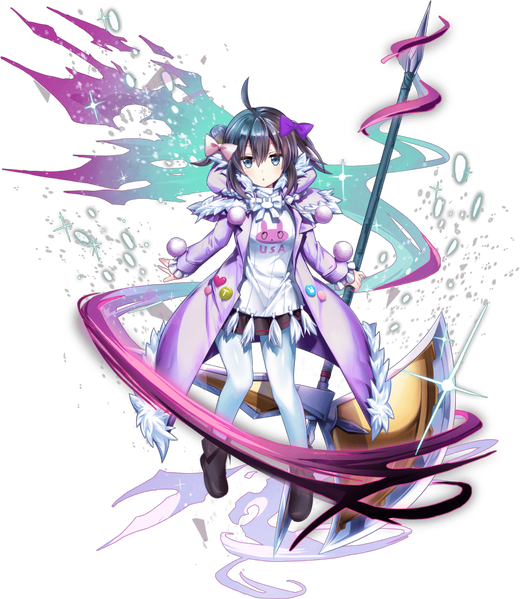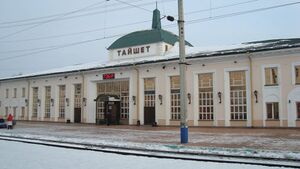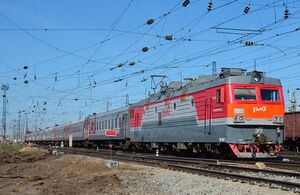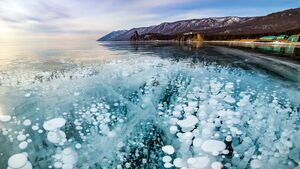Tayshet
| Tayshet | |||||
|---|---|---|---|---|---|
| Japanese Name | タイシェト | ||||
| Weapon | |||||
| Race | Human | ||||
| Nationality | |||||
| Birthday | November 4 | ||||
| Constellation | Scorpio | ||||
| Talents | Butchery | ||||
| Likes | Ground blizzards | ||||
| Dislikes | Tundra fields without anyone around | ||||
| Strengths | Never tells lies | ||||
| Weaknesses | Unable to say or do anything that considers other people's feelings | ||||
| Hobbies | Axe maintenance | ||||
Tayshet. From Eisengrad. Tayshet carries out any orders. But, will not kill people. Will not do bad things. This promise will never be broken. Tayshet is an Eisengradian soldier. A bad child no more.
Layers
| Icon | Title | Release Date | Where to Obtain |
|---|---|---|---|
| [Little Berserker] Tayshet | 2021 August 30 (EN) | Premium Gacha | |
| [Across the Frozen River] Tayshet | 2021 October 21 (EN) | [Ancient Lake Cool Knight] Event Reward | |
| [Little Red Riding Hunter] Tayshet | 2022 October 31 | [Harz and the Dreaming Nightmare] Limited Gacha | |
| [Natural Sadistic] Tayshet | 2021 October 21 (EN) | [Ancient Lake Cool Knight] Pick Up Gacha, Premium Gacha | |
| [The Time to Hunt] Tayshet | 2022 June 24 (EN) | [Pure Nature Foodie!] Limited Gacha | |
| [Covert Athletic Meet] Tayshet | 2023 September 22 | 3rd Anniversary Limited Gacha 2 |
Skills
Trivia
- Tayshet's birthday is the Unity Day of Russia. It commemorates the popular uprising which expelled Polish–Lithuanian occupation forces from Moscow militia from Nizhny Novgorod in November 1612, reinstituted by the Russian Federation in 2005.
- Tayshet's "USA" shirt in [Across the Frozen River] and [Natural Sadistic] does not mean the "United States of America", nor does it mean "rabbit" in Japanese (うさ), but instead it is a reference to Upravlyaemyj Sputnik Aktivny (USA, Управляемый Спутник Активный), also known in the west as Radar Ocean Reconnaissance Satellite or RORSAT, it was a series of 33 Soviet reconnaissance satellites manufactured in Tayshet.
- Tayshet was formerly an assassin lurking in the Lake Baikal region until her arrest and conscription into the SSS. Lake Baikal (real life) is the world's largest freshwater lake by volume as well as being the deepest lake in the world with a maximum depth of 1,642 m (5,387 ft).
- The "KUMA" logo in the background of [The Time to Hunt] resembles the famous PUMA logo for sportswear apparel. In November 6, 2017 the Opposition Board ruled for the invalidation case no. 2016-900308 that the famous PUMA logo for sportswear was dissimilar to the "KUMA" mark with bear design for goods in class 25. The decision was later reversed on August 1, 2019 by the Japan Patent Office (JPO), before the statute of limitations of Japanese law.
Counterpart
Tayshet Railway Station (Тайшет станция) is a station opened in 1899, in the Tayshet region of the Trans-Siberian, located in Irkutsk Oblast. The railway main route that runs 5772 miles starting in Moscow in the West and ending in Vladivostok in the East. It is not a major stop, but it is an important railway junction and is a large out-of-class marshalling yard. The station is electrified with alternating current.
Three railway lines converge in Tayshet: the Trans-Siberian Railway runs from northwest to southeast; it is the terminus station of Baikal–Amur Mainline to the northeast; as well as the terminus station of the Abakan-Tayshet Railway, serving as a transfer from BAM to Kuzbass, Altai, Kazakhstan, the South Urals, and Bashkiria. The Second World War Victory Monument sits in front of the station. Wikipedia
Tayshet (Тайшет, lit. cold river in the Kott language) is a town and the administrative center of Tayshetsky District in Irkutsk Oblast, Russia, located 669 kilometers (416 mi) northwest of Irkutsk, the administrative center of the oblast. Tayshet was founded in 1897 as a supply point and station on the Trans-Siberian Railway and was granted town status in 1938. During the 1930s–1950s, Tayshet was the center of administration for gulag labor camps Ozerlag and Angarstroy.
Construction of the first section of the Baikal–Amur Mainline started in 1937 and was managed from here. According to some survivor accounts, between Tayshet and Bratsk there is "a dead man under every sleeper." Along with Japanese prisoners from the Kwantung Army, German prisoners of war formed a large proportion of the forced labor contingent, generally under a 25-year sentence, such as Dietrich von Saucken. Surviving German POWs were repatriated in autumn of 1955, after West German Chancellor Konrad Adenauer's visit to Moscow. Wikipedia
Lake Baikal (Oзеро Байкал) is a rift lake located in Russia situated in southern Siberia between the federal subjects of Irkutsk Oblast to the northwest and Buryatia to the southeast. Baikal is one of the clearest lakes in the world. During the winter, the water transparency in open sections can be as much as 30–40 m (100–130 ft), but during the summer it is typically 5–8 m (15–25 ft). Baikal is rich in oxygen, even in deep sections, which separates it from distinctly stratified bodies of water such as Lake Tanganyika and the Black Sea. The region to the east of Lake Baikal is referred to as Transbaikalia or as the Transbaikal, and the loosely defined region around the lake itself is sometimes known as Baikalia. UNESCO declared Baikal a World Heritage Site in 1996.
Lake Baikal is in a rift valley, created by the Baikal Rift Zone, where the Earth's crust is slowly pulling apart. At 636 km (395 mi) long and 79 km (49 mi) wide, Lake Baikal has the largest surface area of any freshwater lake in Asia, at 31,722 km2 (12,248 sq mi), and is the deepest lake in the world at 1,642 metres (5,387 feet; 898 fathoms). The surface of the lake is 455.5 m (1,494 ft) above sea level, while the bottom of the lake is 1,186.5 m (3,893 ft; 648.8 fathoms) below sea level, and below this lies some 7 km (4.3 mi) of sediment, placing the rift floor some 8–11 km (5.0–6.8 mi) below the surface, the deepest continental rift on Earth.
In geological terms, the rift is young and active – it widens about 4 mm (0.16 in) per year.[19] The fault zone is also seismically active; hot springs occur in the area and notable earthquakes happen every few years. The lake is divided into three basins: North, Central, and South, with depths about 900 m (3,000 ft), 1,600 m (5,200 ft), and 1,400 m (4,600 ft), respectively. Fault-controlled accommodation zones rising to depths about 300 m (980 ft) separate the basins. The North and Central basins are separated by Academician Ridge, while the area around the Selenga Delta and the Buguldeika Saddle separates the Central and South basins. The lake drains into the Angara, a tributary of the Yenisey. Landforms include Cape Ryty on Baikal's northwest coast. Wikipedia
Map
Gallery
- Pages using Tabber parser tag
- Pages using DynamicPageList3 parser tag
- Weapon Axe
- Human
- Eisengrad
- Scorpio
- Element Cut
- Element Water
- Train Knights
- Russia

























